By Kevin Lisota
KENNEDY SPACE CENTER, Florida. — Since the final flight of the Space Shuttle in 2011, astronauts had not been launched into space from US soil for nine years. On May 30, 2020, SpaceX changed that by sending NASA astronauts Bob Behnken and Doug Hurley to the International Space Station aboard their Crew Dragon capsule. It also marked the first time that a commercial company has sent astronauts into space aboard one of their rockets.

NASA astronaut Doug Hurley travels to Launch Complex 39A aboard a Tesla.
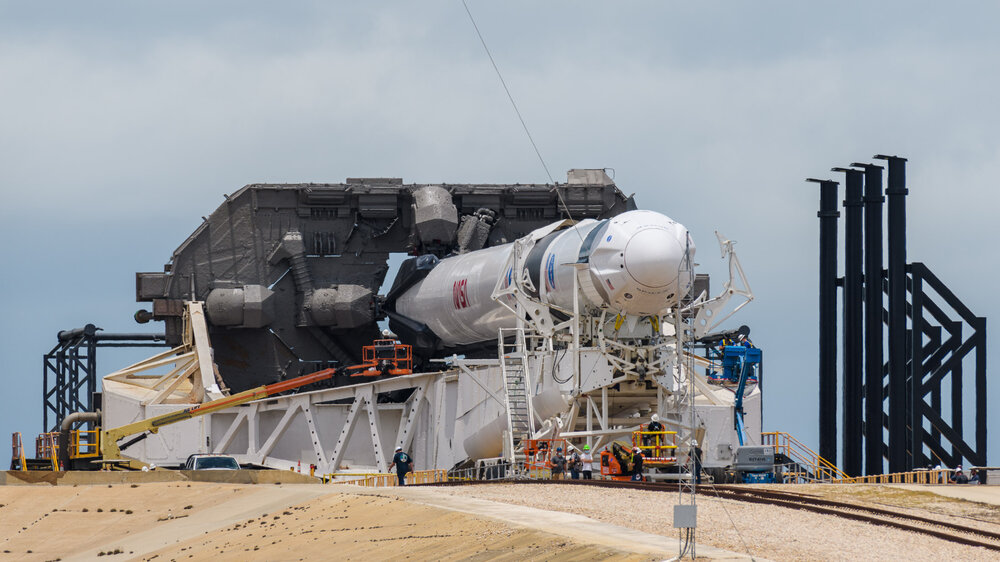
SpaceX Crew Dragon capsule at the tip of a Falcon 9 rocket as it prepares to be hoisted into vertical position
I had the unique opportunity to witness the historic launch at Kennedy Space Center and place remote cameras around the launch pad to capture close-up views of the rocket. The process of photographing rockets with remote cameras is a unique and risky sort of photography. For this launch, I placed five cameras around the launch pad at distances of 1300 ft (395 m) to 2400 ft (730 m). At those distances, it is not safe for humans. There is explosion risk, and the sound of the rocket at that distance is loud enough to injure or even kill.
Launch Pad Close-Ups
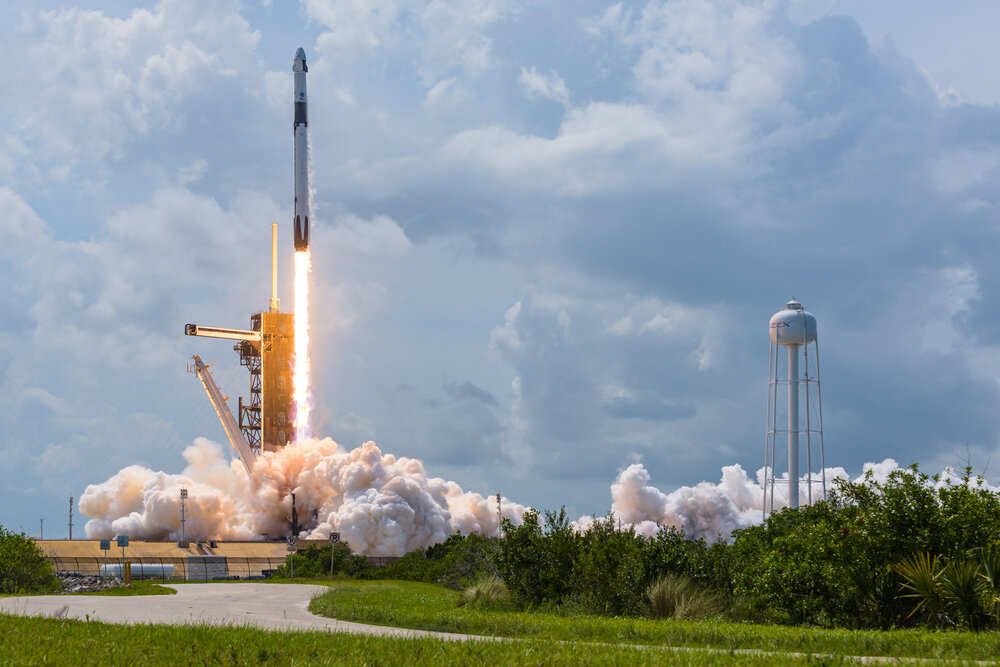
Nikon D810, 70mm, 1/1250 sec, f/9, ISO 64 – 2400 ft (730 m) from launch pad.
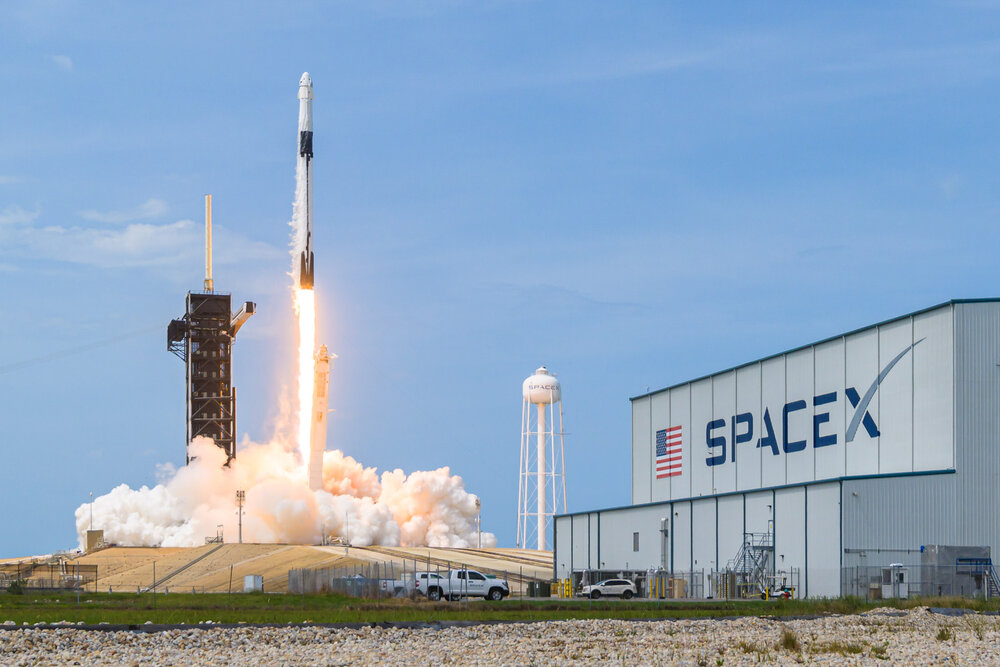
Nikon Z7, 35mm, 1/1600 sec, f/9, ISO 62 – 2100 ft (650 m) from launch pad on the Saturn V crawlerway.
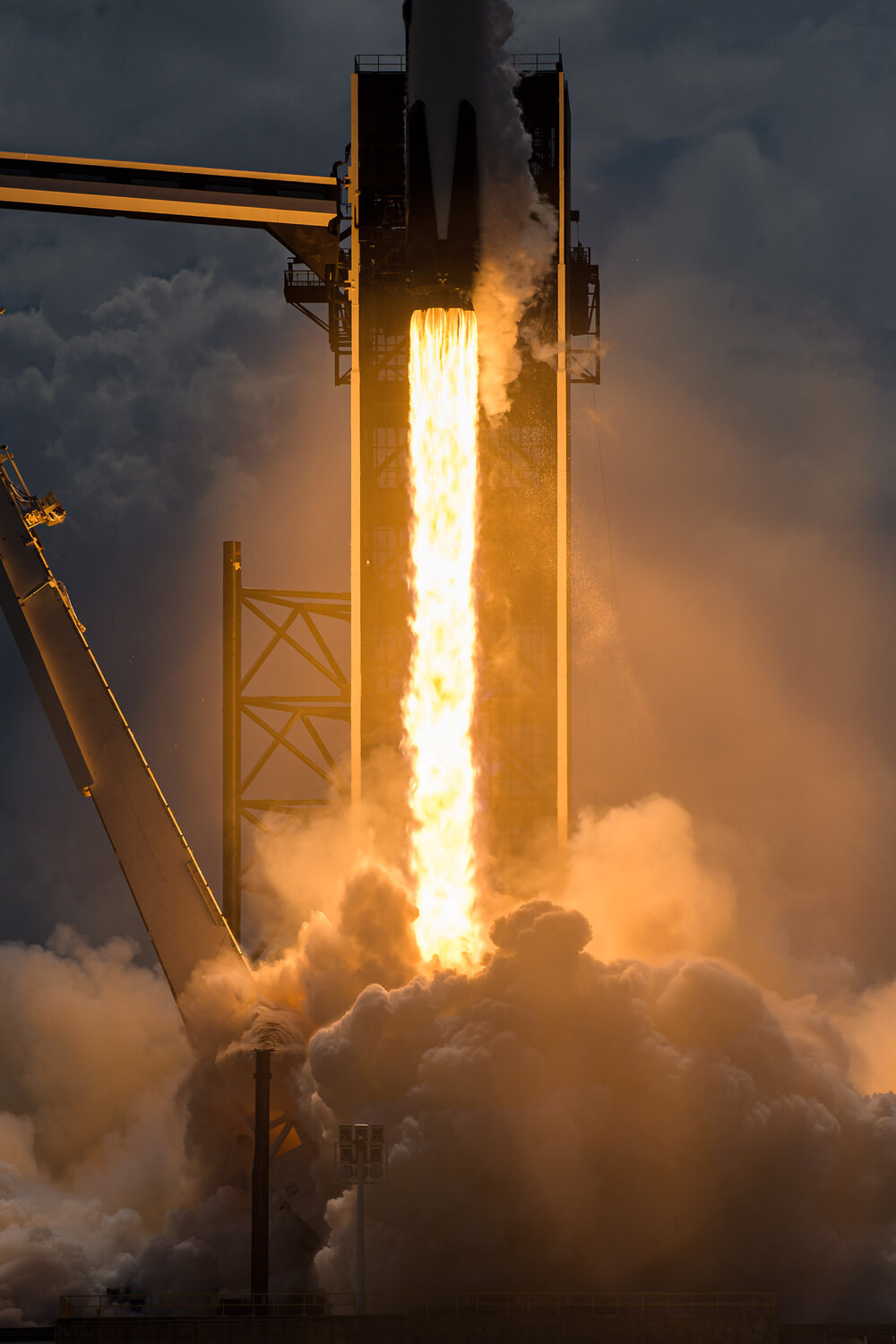
Nikon D5, 150mm, 1/4000 sec, f/9, ISO 100 – 1300 ft (395 m) from launch pad.
Remote Camera Retrieval
Viewing a launch in-person is thrilling. The anticipation for a successful launch and the sheer power and sound is unlike anything else that I have experienced. However, the excitement of launch is doubled when you have remote cameras. Did my cameras survive? Were my settings correct? For this launch, I had four days to worry and second-guess my setup before seeing the results.
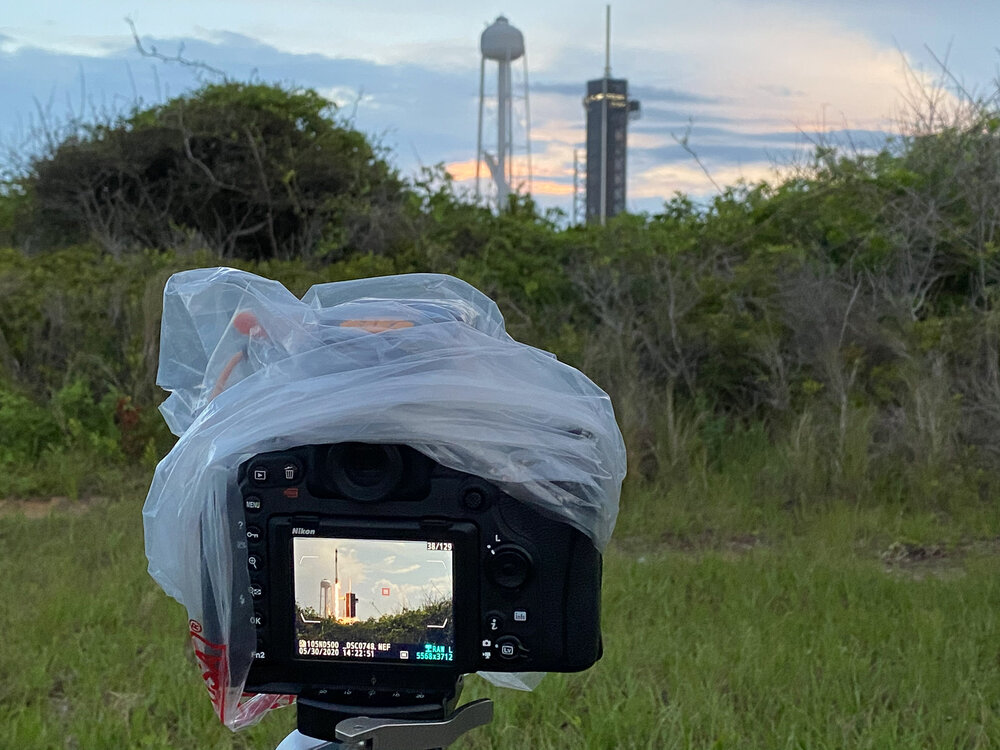
Success!
We weren’t able to pick up our first set of remote cameras until about four hours after launch. The two closest cameras had to wait until the next morning for pickup, due to safety reasons. This meant another night of Florida rainstorms for my gear.
Remote Camera Setup
With no wireless access at the launch pad and the potential for changes in launch time, the only effective way to trigger the cameras is to use a sound trigger. A sound trigger fires the shutter in a continuous mode based on the loud sound of the rocket engines. Like many other launch photographers, I use the MIOPS Smart+ trigger
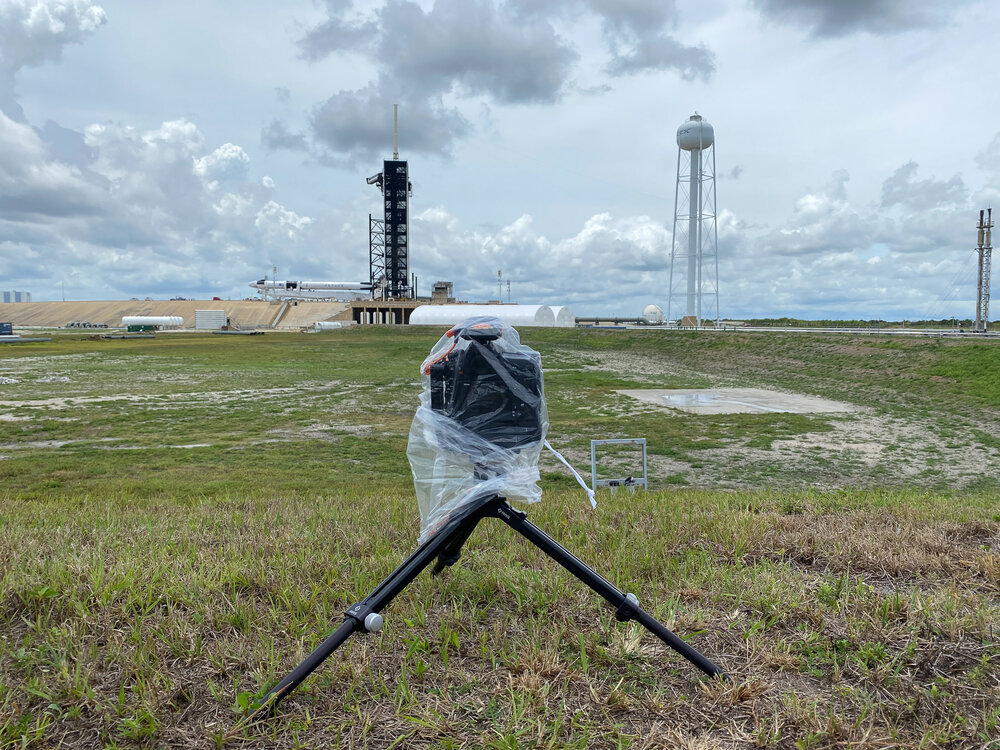
Camera protection with a low center of gravity and wrapped for the wet Florida weather.
Remote cameras are set up the day before launch. Florida weather means you are going to be faced with dew, condensation, or rain, so it is important to protect the cameras from the elements. I wrapped my cameras in plastic bags, except for the front lens element. More sophisticated setups use plastic or wood enclosures.
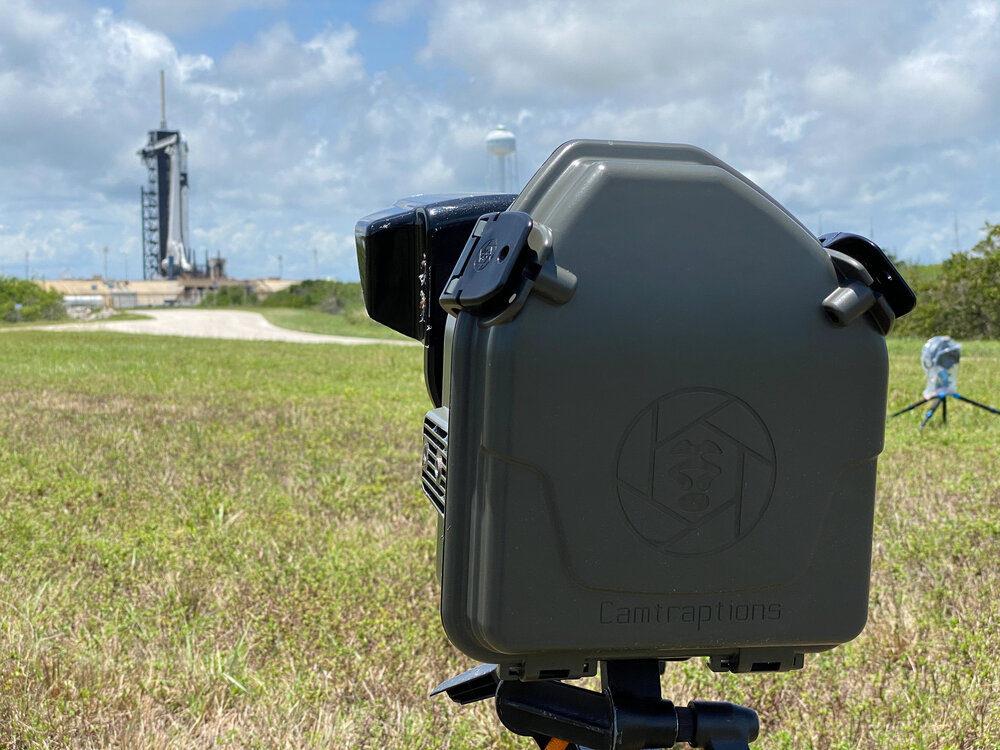
Camtraptions weather-sealed camera housing.

Wood enclosure to protect launch cameras.

Repeated heavy rains and high humidity left significant condensation inside of some lenses.
If a launch gets scrubbed, as this one did, your cameras remain on the launchpad for several days. The Wednesday launch of the SpaceX Crew Dragon was scrubbed and moved to Saturday. During the four nights, our cameras were subjected to punishing thunderstorms. Luckily, we got to revisit the cameras on Friday before launch, and I had a couple of lenses that I swapped that had condensation inside of the front element after all of that rain.
It is also important to protect the cameras from the rocket itself. A launchpad explosion, brush fires, or the thrust of the rocket can throw or melt cameras on occasion. But that is the inherent risk of rocket photography. You must risk damage to your equipment to get the shot.
Rocket Photography Camera Settings
One question that photographers always ask is how to properly expose a rocket launch. The nice thing about exposure settings for rockets is that you expose for the extremely bright exhaust of the rocket, which is consistent between daytime and nighttime launches. I usually underexpose my rocket shots by 1-2 stops to avoid blowing out highlights in the rocket exhaust. This requires boosting the exposure in the sky and surroundings in post-processing. To capture even greater details of the flames coming from the rocket engines, I will set some cameras to severely underexpose by 3-4 stops.
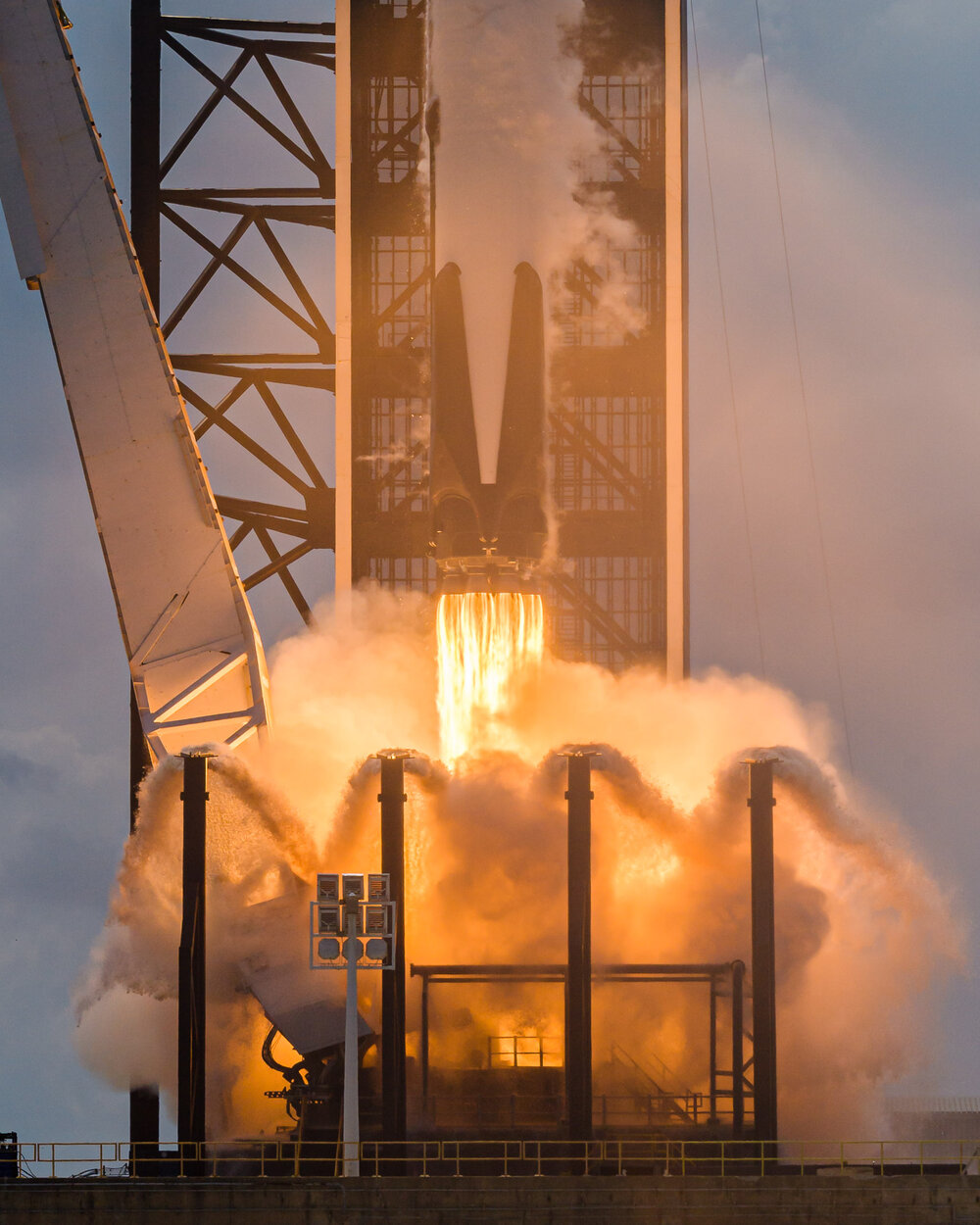
Flame details from the Falcon 9 Merlin engines – Nikon D5, 150mm, 1/4000 sec, f/9, ISO 100 – 1300 ft (395 m) from launch pad.
The composition can be challenging. You have to visualize the path of the rocket and the size and direction of the exhaust cloud coming out of the flame trench. I have shot at this launchpad before, so I was better able to pre-visualize the results I would get. When I encounter new rockets or launch pads, I research previous photos taken by other photographers. I focus the cameras on the rocket, change to manual focus, and apply gaffer tape to the lens focus rings to ensure that focus isn’t missed or changed. The cameras also need to be in continuous release mode, and the sound triggers must be activated and tested by clapping your hands or pounding on them to make sure that they are on.
Why I love launch photography
The combination of technical settings, lots of gear, high risk, and the thrill of the launch itself makes rocket photography unlike any other sort of photography that I do. It was amazing to witness this launch in person. It was a significant milestone for crewed space flight and a bright spot for our country and the world in an otherwise challenging time.
View Post on Original Blog
https://muenchworkshops.com/blog/lift-off-photographing-spacex-launch
